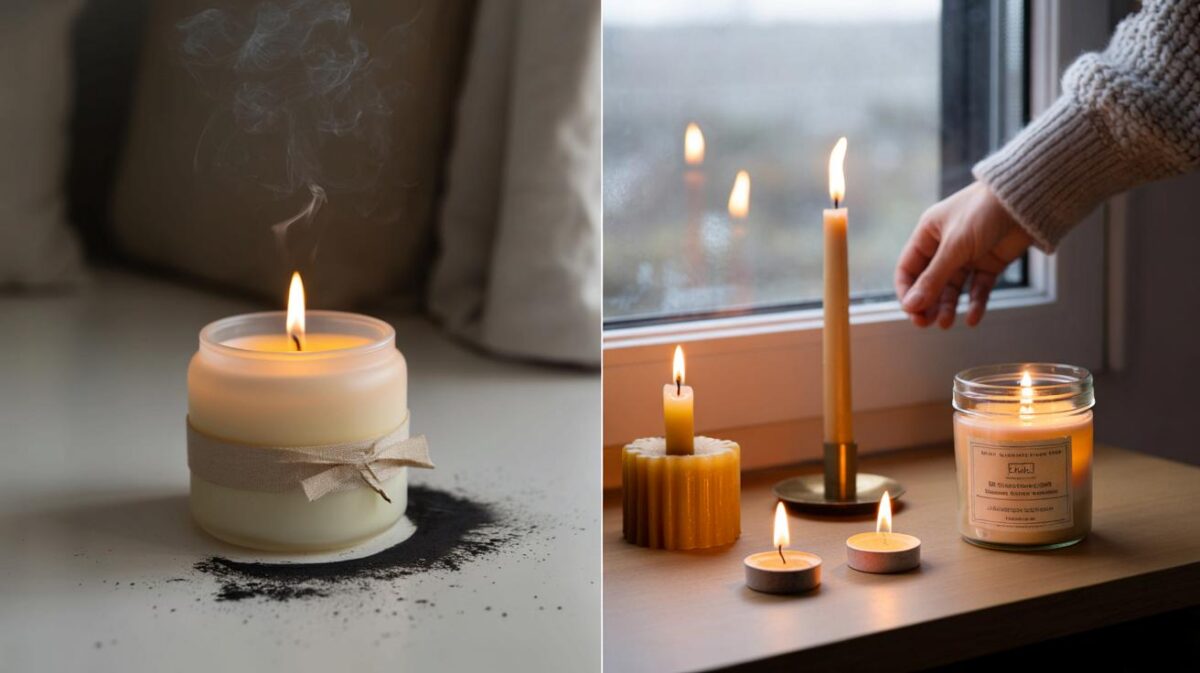Your flat feels warm until the wind snakes under the front door and nips at your ankles. Bills are up, radiators are sulking, and you’re counting the hours until morning. You don’t need a full renovation. You need five minutes and a strip of foam.
Every time the lift clanked, the draught flicked his post like a bored cat, spiteful little gusts sneaking across the floorboards. His kettle steamed. His heat escaped. He swore he’d sort it “one day” and put on another hoodie. We’ve all had that moment when the flat feels like it’s conspiring against you.
That night I tried something simple. Self-adhesive foam on the door frame, a quick clean, a crisp press of the tape. The corridor rattle softened. The room held its warmth. The difference was immediate. One tiny fix.
Why a tiny gap steals your heat
A door that doesn’t quite meet its frame is basically a letterbox for your heating budget. Air loves a shortcut, and that sliver by the latch or the gap along the top can bleed warmth faster than you think. You don’t need gale-force winds for mischief either. A low, persistent drift does the quiet damage.
Stand barefoot at midnight and you’ll know the villain. Cold air slides in, the warm air you paid for gets pushed up and out, and your boiler starts its little marathon. Your thermostat tries to keep up. The room never feels settled. That’s the cost of a millimetre.
In the average UK home, uncontrolled draughts can account for a chunky slice of heat loss, and small fixes add up. The Energy Saving Trust reckons simple draught-proofing can save many households around £45–£60 a year, sometimes more in leakier places. Those aren’t fairy-tale numbers. Multiply them by darker months, by the déjà-vu of early sunsets, by that nightly shiver you pretend not to notice. **Heat moves to cold**. Your job is to slow the queue.
The five‑minute fix that actually works
The quickest win is self-adhesive foam weather strip on the door frame. Clean the frame where the door meets it, especially the latch side and the top. Peel the backing, stick the strip so the door just kisses it, then close and open the door to check for smooth movement. If the gap at the bottom is the real culprit, slide in a draft “snake” or roll a towel as a stand-in.
Pick a medium-density foam, roughly 6–10 mm thick. Thinner strips suit tighter doors; chunkier ones tame big gaps. Work in short sections so corners look neat. Press hard for a few seconds to lock the adhesive, and leave it be while you make tea. Let’s be honest: nobody really does that every day. But five calm minutes right now beats a winter of resentful stomping in socks.
Don’t crush the strip so the door jams. If it’s sticking, trim the foam or move it a hair. Avoid sealing trickle vents or anything near a gas appliance; you want controlled ventilation, not a sealed jar. It feels almost silly how simple it is.
“Your front door is a hole until you politely tell it not to be,” a handyman neighbour told me, handing over a roll of foam like it was a magic trick.
- What you need: Self-adhesive foam strip, scissors, a cloth, a quick wipe of soapy water or alcohol.
- Where to stick it: Frame edges where light or air leaks through; letterbox brush if it rattles.
- Bottom gap fix: A door snake or a removable brush strip you can screw on later.
- Test fast: Candle or tissue near the frame; watch for a twitch. That’s your map.
- Renter-friendly: Foam peels off cleanly; don’t nail or fill anything if it risks your deposit.
What it feels like when the draught is gone
The first sign isn’t heat. It’s silence. The corridor hushes, the letterbox stops chattering, and the floor doesn’t tingle against your feet like a warning. Your radiator clicks once and then rests. The room holds its breath. You stop chasing the thermostat and start noticing the book in your lap.
I tried the same strip on a wobbly sash window rail in a rented flat in Leeds. The room used to cool down as soon as the oven turned off. After the foam, the last blast of heat hung around, and the morning wasn’t a sprint to slippers. Savings don’t shout, but they do add up. The meter rolls a little slower. The kettle cools a little slower. Small mercies stack.
There’s a logic to why this works. Warm air rises and escapes through high leaks; cold air sneaks in low through gaps under doors. Break that cycle at the doorway and you slow the churn. You’re not sealing a submarine. You’re just guiding the air so the heat you paid for actually hangs about. **Marginal gains**—that’s the game.
Keep it simple, keep it safe
Use painter’s tape as a quick test before committing. Stick a short strip where you suspect a leak and close the door gently. If the tape crinkles, there’s movement, so foam will help. If the door scrapes hard, go thinner. Cut corners at 45 degrees for tidy joins. Wipe the frame dry, then stick. No heroics needed.
Common mistakes? Over-sealing the bottom gap so the door scuffs, or covering trickle vents, which are there for a reason. Skip anything near boilers or open-flued fires; leave permanent vents alone. If you rent, go for removable options and keep the old packaging as proof for the landlord. You’re fixing comfort, not inviting a deposit row. And if you live with allergies or cook often, keep that gentle airflow where it should be—through designed vents, not under the door.
If you’re battling a noisy letterbox, add a brush-lined plate so wind can’t rattle the flap. For sash windows, thin foam along the meeting rail can calm the wobble without gluing anything shut. Tiny tweaks outpunch big speeches.
“Heat the person, not the street,” as an energy adviser once quipped to me, half-joking, wholly right.
- Time: 5 minutes for a door frame, 60 seconds for a towel snake.
- Cost: £3–£8 for foam; £10–£15 for a decent door brush.
- Payback: Warmer evenings now; lower bills over the season.
- Test: A candle, an incense stick, or a tissue—watch the flicker.
- Safety: Never block fixed ventilation, air bricks, or anything your heater needs to breathe.
Share the warmth
There’s a small joy in solving the thing you’ve been moaning about for weeks. It’s not a TikTok renovation. It’s not a grand reveal. It’s closing a gap the width of a pound coin and feeling the room stop leaking patience. Friends visit and can’t quite place why it feels calmer. You know. The wind’s been told to wait outside.
This is the season of modest wins. Foam, a towel snake, a brush for the letterbox, a window you nudge into line. Post a photo, swap tips in the group chat, lend the roll to a neighbour who keeps wearing two jumpers. The map of winter is made of tiny crossings that keep the warmth where it belongs.
Take five minutes tonight. Stand in the doorway and listen. The flat will tell you what to do next.
| Key points | Detail | Reader Interest |
|---|---|---|
| 5-minute foam fix | Self-adhesive strip on door frame edges; test, stick, shut | Fast, cheap, renter-friendly comfort boost |
| Stop the churn | Break the cold-in, warm-out loop at doors and leaky rails | Warmer nights without cranking the heating |
| Mind the vents | Leave trickle vents and gas ventilation clear | Comfort with safety, no deposit drama |
FAQ :
- What thickness foam should I buy?Start with 6–8 mm for typical gaps; go 10 mm for big light leaks. If the door catches, drop down a size.
- Will this damage my rented flat?Foam strips peel off. Clean the frame first and remove slowly later; any residue wipes away with warm soapy water.
- Can I use it on windows?Yes on frames and meeting rails, as long as the window still opens safely. Don’t seal shut escape routes.
- Is a rolled towel really effective?As a stopgap, yes. A proper door snake or brush strip is neater and works when you’re not looking.
- How do I find hidden draughts?Do the candle or tissue test around frames, locks, and letterboxes. At night, look for outside light sneaking through.








